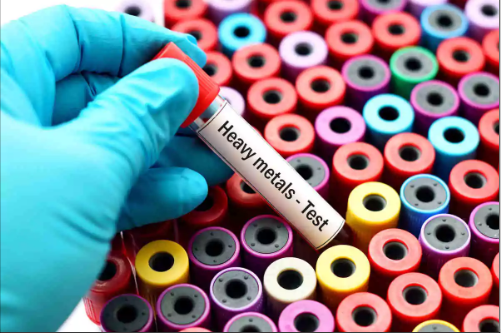Heavy metal exposure is an invisible threat that can accumulate in the body over time, leading to serious health complications if left undetected. One of the most effective ways to assess and manage this risk is through heavy metal testing. Proper preparation before your appointment can improve the accuracy of the results, ensure a smooth testing process, and provide a clearer picture of your body’s metal load. By understanding what to do before your test, you can take full advantage of this preventive health measure.
Understand the Purpose of the Test
Before attending your appointment, it’s important to understand what heavy metal testing measures and why it is performed. These tests evaluate the concentration of toxic metals such as lead, mercury, arsenic, and cadmium in biological samples like blood, urine, hair, or nails. Each sample type provides different insights:
- Blood Tests: Detect recent exposure and active metal levels in the bloodstream.
- Urine Tests: Often used with chelation agents to estimate total body burden.
- Hair and Nail Tests: Offer a long-term view of accumulated exposure.
Knowing the type of test you are having will help you follow the specific preparation guidelines recommended by your healthcare provider.
Review Your Current Diet and Supplements
Certain foods and supplements can influence heavy metal levels or interfere with test results. Consider the following:
- Avoid Metal-Contaminated Foods: Some seafood and imported products may contain high levels of mercury or other metals. Reducing these foods for a few days before testing may help achieve more accurate readings.
- Supplement Intake: Multivitamins and minerals can contain metals like zinc or copper. Your healthcare provider may advise temporarily pausing specific supplements prior to your test.
- Hydration: Drinking adequate water helps your body maintain normal metabolic processes and supports accurate urine or blood sample collection.
Documenting your recent diet and supplement intake can also help the provider interpret your results correctly.
Minimize Environmental Exposure
In the days leading up to your test, reducing additional exposure to heavy metals can improve accuracy. Common sources include:
- Household dust from old paint or plumbing
- Cleaning chemicals and pesticides
- Contaminated water or tap fittings
While short-term changes may not dramatically alter results, awareness and avoidance of these sources can contribute to a more precise assessment of your typical exposure.
Follow Laboratory Instructions
Each testing facility may have specific instructions depending on the sample type. General guidelines include:
- Fasting: Some blood tests require fasting for a few hours prior to collection.
- Avoiding Physical Contamination: Wash hands thoroughly before hair or nail sampling.
- Timing of Samples: Certain urine tests may need to be collected at specific times of day or after using a chelation agent as directed.
Always review and follow the instructions provided by the testing center to ensure accurate results.
Keep a Health and Exposure Log
Bringing a detailed history of possible metal exposure can help healthcare providers interpret results effectively. Include:
- Occupational exposures, such as work in manufacturing, welding, or construction
- Recent home renovations or hobbies that involve metals
- Past medical treatments that may have introduced metals into your system
This context can guide follow-up recommendations and preventative strategies.
Manage Stress and Lifestyle Factors
Stress, fatigue, and illness can influence laboratory outcomes indirectly by affecting overall metabolism and organ function. Leading up to your appointment:
- Prioritize sleep and rest
- Maintain a balanced diet
- Engage in light exercise if approved by your provider
A stable and healthy routine can help your body reflect typical levels of metals rather than transient fluctuations.
What to Expect During the Appointment
Understanding the procedure can reduce anxiety and help you prepare mentally. Heavy metal testing is usually straightforward and minimally invasive:
- Blood samples are collected via standard venipuncture.
- Urine samples may require a 24-hour collection or a spot sample depending on protocol.
- Hair and nail samples are cut close to the root or tip in small amounts for laboratory analysis.
The provider may also review your exposure history and discuss lifestyle adjustments to support detoxification and metal management.
Post-Test Considerations
After the test, it is important to follow any recommendations given by your healthcare provider. Results may indicate the need for:
- Dietary adjustments
- Lifestyle changes to reduce exposure
- Medical interventions or chelation therapy if levels are elevated
Maintaining regular monitoring, especially for individuals at higher risk, ensures early detection of changes in metal burden over time.
Conclusion
Proper preparation for heavy metal testing ensures the most accurate results, which can help identify potential health risks before serious complications arise. By following dietary, environmental, and laboratory guidelines, you provide a clearer picture of your body’s metal levels. Pairing these efforts with daily habits such as consuming toxin free coffee can further reduce exposure to harmful metals and support long-term health.





